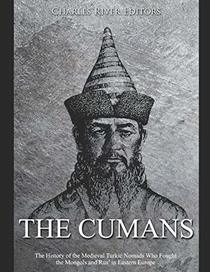The Cumans, also known as Polovtsians or Polovtsy, were a Turkic, nomadic, horse people making up the western branch of the Cuman-Kipchak confederation. From the late 800s, the Cumans were a fierce military and cultural force that could not be stopped. The monarchs of China to Hungary and Russia to the Byzantine Empire were savaged by the Cumans, often losing whole armies and even whole cities. The Cumans were not interested in settling; all they wanted were riches and plunder to take back to their homes in the steppes.
In 1223, the Mongols superseded the Cumans, whereas, the Cumans dispersed and integrated into various European and central Asian lands. In the beginning of the Cuman tribes, they practiced a shamanistic religion. Over the centuries, many Cumans joined the Christian faith. When many Cumans joined the Mongol Golden Horde, they became Muslims. Many Cuman helped found dynasties in Bulgaria, Hungary, and Romania.
One of the problems with finding out about the Cumans is that they did not leave written information. What we have are descriptions from other groups (generally enemies), who tended not to have a positive view of the Cumans. The word 'cumans' refers to their yellow hair. Unlike the other Turkic groups, they had blond hair, blue eyes, and fair skin.
This book spent some time explaining the difference in the Fourth Crusade (1202 - 1204) from previous and later conflicts. Essentially, this Crusade was between Western Crusaders (Catholic Europeans led by the Pope) and the Eastern Byzantium Empire (the Greek Orthodox Church). The Cumans played a decisive role here because they caused so much wanton destruction. When there wasn't much left to look, the Cumans returned to their homes north of the Danube. The Fourth Crusade was the turning point; after this one, the European Christians gradually lost their hold on the Holy Lands.
Charles Rivers Editors writes some of the best history summaries around. However, I found this difficult to follow. I went to other sources to understand the big picture and came back and reread this book. Then, it made sense. I feel that they should have had separate chapters for the Cuman's early activities, versus the Fourth Crusade, and their later activities (essentially their assimilation). The Cumans were active from the 9th - 13th centuries and this book did not make various changes clear.
In 1223, the Mongols superseded the Cumans, whereas, the Cumans dispersed and integrated into various European and central Asian lands. In the beginning of the Cuman tribes, they practiced a shamanistic religion. Over the centuries, many Cumans joined the Christian faith. When many Cumans joined the Mongol Golden Horde, they became Muslims. Many Cuman helped found dynasties in Bulgaria, Hungary, and Romania.
One of the problems with finding out about the Cumans is that they did not leave written information. What we have are descriptions from other groups (generally enemies), who tended not to have a positive view of the Cumans. The word 'cumans' refers to their yellow hair. Unlike the other Turkic groups, they had blond hair, blue eyes, and fair skin.
This book spent some time explaining the difference in the Fourth Crusade (1202 - 1204) from previous and later conflicts. Essentially, this Crusade was between Western Crusaders (Catholic Europeans led by the Pope) and the Eastern Byzantium Empire (the Greek Orthodox Church). The Cumans played a decisive role here because they caused so much wanton destruction. When there wasn't much left to look, the Cumans returned to their homes north of the Danube. The Fourth Crusade was the turning point; after this one, the European Christians gradually lost their hold on the Holy Lands.
Charles Rivers Editors writes some of the best history summaries around. However, I found this difficult to follow. I went to other sources to understand the big picture and came back and reread this book. Then, it made sense. I feel that they should have had separate chapters for the Cuman's early activities, versus the Fourth Crusade, and their later activities (essentially their assimilation). The Cumans were active from the 9th - 13th centuries and this book did not make various changes clear.




